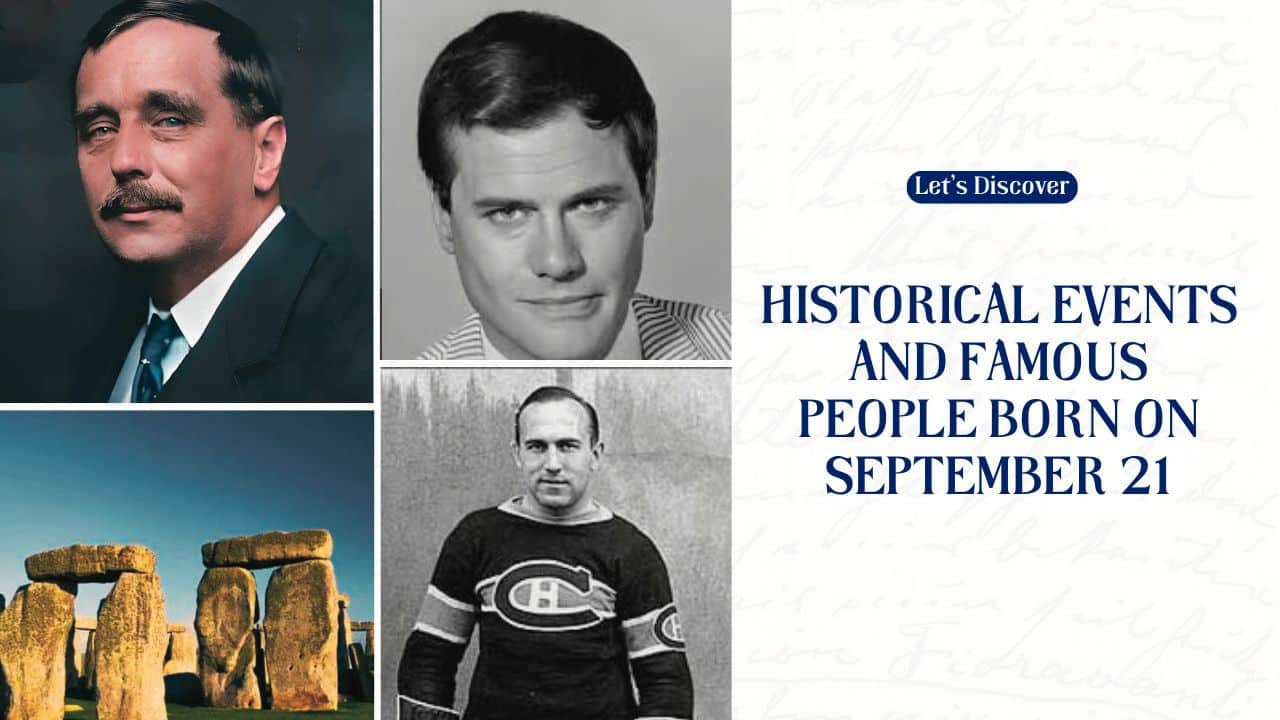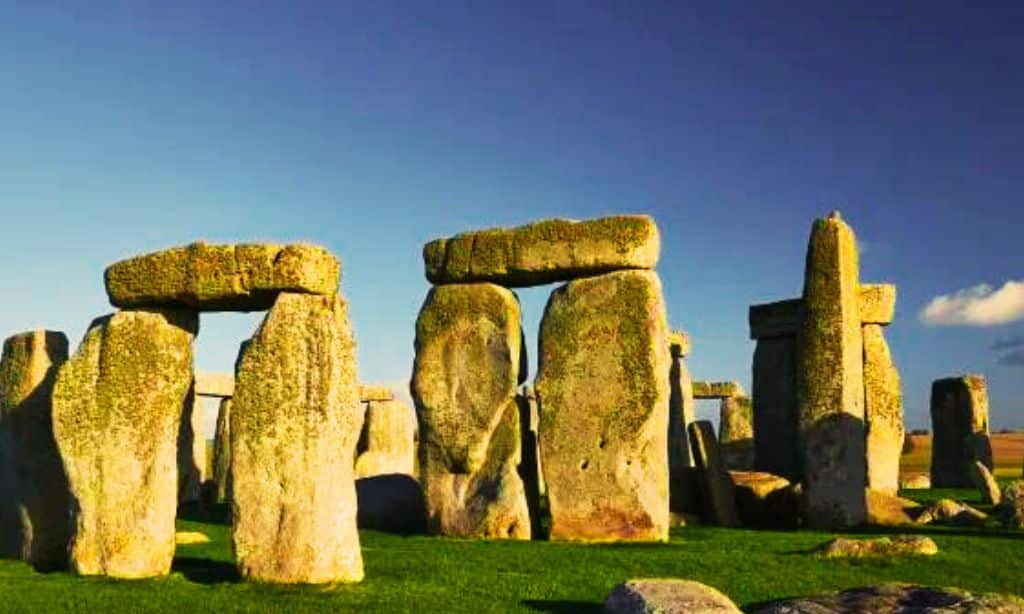September 21 is a day that has seen many big events and the births of people who made a difference in the world. Let’s explore what happened on this day and learn about some famous people born on September 21.
Historical Events on September 21
1. Richard I Captured (1192)
On September 21, 1192, something surprising happened to the King of England. Richard I, also known as Richard the Lionheart, was captured by Leopold V, the Duke of Austria. This happened when Richard was coming back from the Third Crusade, a big war in the Middle East.
Richard I was a famous warrior king. He spent most of his time as king fighting in faraway lands. On his way home from the Crusade, he tried to travel in secret because he had made many enemies. But he was recognized and caught near Vienna.
Leopold V was angry with Richard because of things that happened during the Crusade. He kept Richard as a prisoner and asked for a lot of money to let him go. This capture was a big problem for England. The country had to pay a huge amount of money to free their king. It took more than a year to collect all the money.
This event shows how dangerous it was to be a king in those times. It also shows how the Crusades, which were fought far from Europe, could cause problems back home.
2. Stonehenge Purchase (1915)
On September 21, 1915, something unusual happened to one of the world’s most famous old monuments. A man named Cecil Chubb bought Stonehenge for £6,600. This is about £820,000 in today’s money, which is still not very much for such an important place.
Stonehenge is a circle of big stones in England. It was built thousands of years ago, and no one knows exactly why. Before Chubb bought it, Stonehenge was owned by a rich family. They decided to sell it at an auction.
Cecil Chubb was a lawyer who lived nearby. Some people say he bought Stonehenge as a gift for his wife, but she didn’t like it very much! Three years later, Chubb gave Stonehenge to the British government. He said it should belong to all the people of Britain.
This purchase helped save Stonehenge. Before this, parts of it were falling down and people could do what they wanted there. After Chubb gave it away, the government started to take better care of it. Today, Stonehenge is one of the most famous old places in the world.
3. Jewish Final Solution Meeting (1939)
On September 21, 1939, a very dark event in history took place. Reinhard Heydrich, a high-ranking Nazi officer, held a meeting in Berlin. This meeting was about what the Nazis called the “Final Solution to the Jewish Question.” This was their terrible plan to kill all the Jewish people in Europe.
Reinhard Heydrich was one of the main people behind the Holocaust, which was the Nazis’ plan to kill Jewish people and other groups they didn’t like. In this meeting, he talked about forcing Jewish people to leave their homes and move to ghettos. Ghettos were poor, crowded areas where Jewish people were forced to live.
This meeting was one of the first steps towards the Holocaust. It led to millions of innocent people being killed. The “Final Solution” was the worst part of World War II and one of the most terrible events in human history.
It’s important to remember this day so that we never let something like this happen again. We should always stand up against hate and treat all people with kindness and respect.
4. Perry Mason TV Series Premiere (1957)
On September 21, 1957, a new TV show called “Perry Mason” started on CBS. This show was based on books written by Erle Stanley Gardner. Raymond Burr played Perry Mason, a lawyer who solved crimes and defended people in court.
Perry Mason was different from other TV shows at the time. It was one of the first shows to focus on solving crimes and court cases. Each episode, Perry Mason would defend someone wrongly accused of a crime. He would then find out who really did it, often in a dramatic way in the courtroom.
The show was very popular and ran for nine years. It helped make courtroom dramas a big part of TV. Many later shows about lawyers and courts were inspired by Perry Mason. The show also helped people understand more about how the law works.
5. Publication of “The Spandrels of San Marco” (1979)
On September 21, 1979, two scientists named Stephen Jay Gould and Richard Lewontin published a very important paper. It was called “The Spandrels of San Marco and the Panglossian Paradigm: A Critique of the Adaptationist Programme.” This paper changed how scientists think about evolution.
Gould and Lewontin used the idea of “spandrels” to explain their theory. Spandrels are spaces created when you put a round dome on top of square walls in a building. They exist because of how the building is made, not because someone wanted them specifically.
The scientists said that some things in nature might be like spandrels. They might exist not because they help animals survive, but just because of how other useful parts developed. This idea made scientists think differently about how animals and plants evolve.
This paper has been mentioned by other scientists more than 4,000 times. It’s still important today in helping us understand how nature works.
Famous Birthdays on September 21
1. Francis Hopkinson (1737-1791)
| Fact | Information |
|---|---|
| Born | September 21, 1737 in Philadelphia, British America |
| Died | May 9, 1791 (aged 53) |
| Known for | Signing the Declaration of Independence |
| Career | Judge, author, composer, flag designer |
| Notable work | Designed first American flag, wrote “The Battle of the Kegs” |
| Other achievements | First American-born composer of secular music |
Francis Hopkinson was born on September 21, 1737, in Philadelphia. He did many important things in early American history. Hopkinson signed the Declaration of Independence, which helped America become its own country.
Hopkinson was also a judge and helped make laws for the new country. He wrote books and music too. In fact, he was the first person born in America to write popular songs that weren’t religious.
One of Hopkinson’s most famous works was a funny song called “The Battle of the Kegs.” It made fun of the British army during the Revolutionary War. He is also said to have designed the first American flag, though some people argue about this.
Francis Hopkinson showed that one person could be good at many different things. His work helped shape the new United States in many ways.
2. H. G. Wells (1866-1946)
| Fact | Information |
|---|---|
| Born | September 21, 1866 in Bromley, Kent, England |
| Died | August 13, 1946 (aged 79) |
| Known for | Science fiction novels |
| Career | Author, historian, sociologist |
| Notable works | “The Time Machine,” “The War of the Worlds,” “The Invisible Man” |
| Other achievements | Nominated for the Nobel Prize in Literature four times |
H. G. Wells was born on September 21, 1866, in Bromley, England. He became one of the most famous writers in the world. Wells is known as one of the fathers of science fiction writing.
Wells wrote many books that imagined what the future might be like. Some of his most famous stories are “The Time Machine,” about a man who travels to the far future, and “The War of the Worlds,” about an alien invasion of Earth.
These stories were new and exciting when Wells wrote them. Many of the ideas in his books, like time travel and space invaders, are still popular in movies and books today. Wells didn’t just write stories. He also wrote books about history and how society works.
H. G. Wells changed how people write science fiction. His ideas about the future helped people think about how science and technology might change the world.
3. Howie Morenz (1902-1937)
| Fact | Information |
|---|---|
| Born | September 21, 1902 in Mitchell, Ontario, Canada |
| Died | March 8, 1937 (aged 34) |
| Known for | Hockey Hall of Fame center |
| Teams | Montreal Canadiens, Chicago Black Hawks, New York Rangers |
| Awards | 3 Stanley Cups, 3 Hart Trophies (MVP) |
| Nickname | “The Stratford Streak,” “The Mitchell Meteor” |
Howie Morenz was born on September 21, 1902, in Mitchell, Ontario, Canada. He became one of the best hockey players of his time. Morenz played mostly for the Montreal Canadiens team.
Morenz was very fast on the ice. People called him “The Stratford Streak” and “The Mitchell Meteor” because of his speed. He helped his team win the Stanley Cup (the big hockey prize) three times.
Morenz was also named the most valuable player in the league three times. This shows how good he was. Sadly, Morenz died young after getting hurt during a game. He was only 34 years old.
Even though his career was short, Howie Morenz changed hockey. He was one of the first real stars of the sport. Many people say he helped make hockey popular in Canada and the United States.
4. Larry Hagman (1931-2012)
| Fact | Information |
|---|---|
| Born | September 21, 1931 in Fort Worth, Texas, USA |
| Died | November 23, 2012 (aged 81) |
| Known for | Playing J.R. Ewing on “Dallas” |
| Career | Actor, director, producer |
| Notable roles | Major Anthony Nelson in “I Dream of Jeannie,” J.R. Ewing in “Dallas” |
| Other achievements | Received multiple Emmy and Golden Globe nominations |
Larry Hagman was born on September 21, 1931, in Fort Worth, Texas. He became a famous actor on television. Hagman is best known for two big TV roles.
First, he played Major Anthony Nelson in “I Dream of Jeannie.” This was a funny show about an astronaut who finds a genie in a bottle. Later, Hagman played J.R. Ewing in a show called “Dallas.” J.R. was a rich oil man who many people thought was the best “bad guy” on TV.
“Dallas” was very popular all around the world. People in many countries watched it to see what J.R. would do next. Hagman played this role for many years, from 1978 to 1991, and then again in a new version of the show from 2012 to 2014.
Larry Hagman showed that actors could be famous for playing very different kinds of roles. He was funny in one famous show and a villain in another. His work helped make American TV shows popular all over the world.
5. Stephen King (born 1947)
| Fact | Information |
|---|---|
| Born | September 21, 1947 in Portland, Maine, USA |
| Known for | Horror and suspense novels |
| Career | Author, screenwriter, columnist |
| Notable works | “Carrie,” “The Shining,” “It,” “The Stand” |
| Awards | Multiple Bram Stoker Awards, World Fantasy Awards, British Fantasy Society Awards |
| Other achievements | Over 350 million copies of his books sold worldwide |
Stephen King was born on September 21, 1947, in Portland, Maine. He has become one of the most famous writers in the world. King is best known for writing scary stories and books that keep readers in suspense.
King’s first big success was a book called “Carrie,” about a girl with special powers. He has written many famous books since then, like “The Shining,” about a haunted hotel, and “It,” about a scary clown. Many of King’s books have been made into popular movies.
What makes King special is how many books he has written and how popular they are. He has written over 60 novels and hundreds of short stories. His books have sold more than 350 million copies around the world.
Stephen King has changed how people think about horror stories. He often writes about ordinary people in scary situations. This has made his books popular with many different kinds of readers, not just people who like scary stories.
Takeaway
September 21 is a day that has seen many important events in history. From the capture of a king to the start of terrible plans in World War II, this day has been part of big changes in the world. It’s also the birthday of people who changed writing, sports, and entertainment.
Learning about these events and people helps us understand how the world has changed over time. It shows us that one day can be the start of big changes, and one person can make a big difference in the world.
Whether it’s H. G. Wells imagining the future, Howie Morenz changing hockey, or Stephen King writing scary stories, the people born on this day have shaped our culture in many ways. The events that happened on this day, both good and bad, have helped make the world we live in today.
References:
- Encyclopedia Britannica – Richard I
- English Heritage – Stonehenge
- United States Holocaust Memorial Museum – The “Final Solution”
- The Museum of Broadcast Communications – Perry Mason
- National Center for Biotechnology Information – The Spandrels of San Marco paper
- National Park Service – Francis Hopkinson
- The H. G. Wells Society – H. G. Wells biography
- Hockey Hall of Fame – Howie Morenz
- The New York Times – Larry Hagman obituary
- StephenKing.com – Official website










































